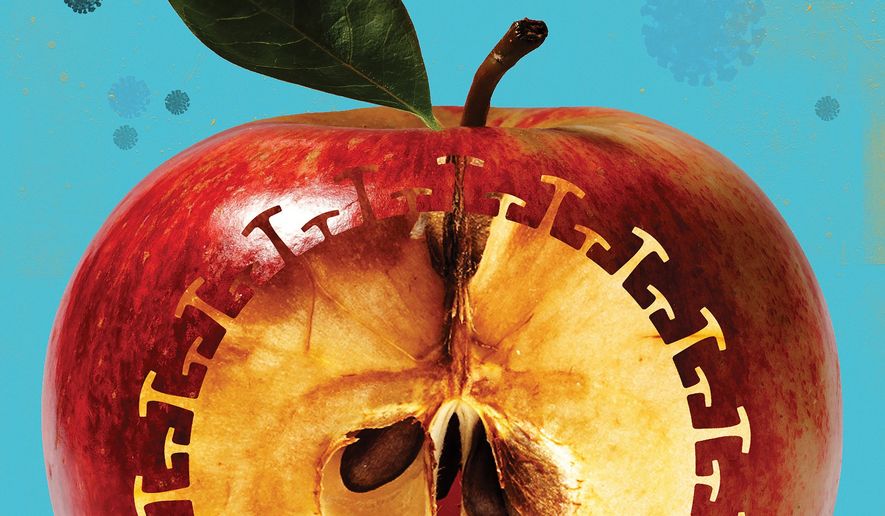OPINION:
Earlier this month, the Education Department revealed reading and math scores of elementary school students plummeted during the pandemic. The hardest hit: fourth graders, whose scores registered the largest drop in two decades.
COVID-related school shutdowns and delayed re-openings have placed learning losses at the equivalent of a year or more of schooling, resulting in 6% to 9% in lower lifetime earnings for the average student and much more drastic losses for minority and low-income children, according to Eric Hanushek, a senior fellow at the Hoover Institution at Stanford University.
The federal government provided $190 billion in stimulus funds to help schools during the pandemic, but only 20% of those dollars were dedicated directly to addressing student learning losses. U.S. Education Secretary Miguel Cardona has been promoting robust tutoring strategies to help make up the difference, but how can a few hours of after-school learning make up for 180 days of lost classroom instruction?
Before the pandemic, the U.S. had an 83% graduation rate. It is now estimated that 40% of American fourth through eleventh graders won’t be able to graduate on time. Even with an additional three years of learning, one-third still won’t be able to make it.
“The magnitude of the problem is way out of line with the recommended solutions,” Margaret “Macke” Raymond, director of the Center for Research and Educational Outcomes at Stanford University, said in an interview. “It’s going to be a couple of decades before we’re out of this.”
The only feasible, proven way to bridge the gap? Buy out the contracts of bad teachers and increase the incentives and paychecks for good ones.
“Studies have shown the difference between a good teacher and a bad teacher is a full year of learning,” Ms. Raymond said.
Although unpopular with Democrats (who have forged a tight political bond with the teachers’ unions and reliably place the teachers’ needs before the students), school districts who have fired underperforming teachers and rewarded those who achieve have seen an increase in student performance.
From 2007 to 2010, Washington D.C. implemented an annual student-focused teacher-evaluation system called IMPACT, which relied heavily on student outcomes to judge teachers. Those rated at the bottom of the scale were fired and those at the top were eligible for as much as $25,000 in “performance pay” if their students exceeded expectations on standardized tests and other benchmarks.
More than 500 teachers were fired during the period, and others were hired. According to a study from the American Enterprise Institute, students in newly hired teachers’ classrooms had better reading and mathematics scores than students in the classrooms of the teachers who were dismissed. Between 2009 and 2015, the city was among the fastest-gaining urban school districts in the country in fourth-grade math and reading scores and did better than the national average for eighth-grade math. Moreover, good teachers were retained.
It worked. Still, then-D.C. Mayor Adrian Fenty and School Chancellor Michelle Rhee were driven from office, after a bitter, public fight with Randi Weingarten, the president of the American Federation of Teachers, who— then and now — prioritized teachers’ needs above those of the children.
Another example is the Dallas Independent School District, which in 2014 rated teachers on a combination of student performance and supervisor evaluations. Teachers who scored the best were given bonuses of up to $12,000 to move to schools with low student performance and stay there. Within three years, the lowest performing schools were brought up to citywide standards.
There is no doubt such reforms, if implemented nationally, will receive significant blowback from the teachers’ unions, who utilize collective bargaining as a way to protect those in the union who prefer to focus on gender-affirming studies and Critical Race Theory-based curricula over teaching basic reading and math skills. Because of the unions’ power, patently bad teachers are protected from the consequences of their incompetence.
Still, Ms. Raymond and Mr. Hanushek argue, that performance-based ratings stand a better chance today than they did before the pandemic, both because of the enormity of the learning loss of the past two years and because of growing parent outrage as they witnessed first-hand what was being taught to their children virtually during the pandemic.
In the meantime, Ms. Raymond is working with more than a dozen states on creating an “instructional commons” where the best teachers in any given subject place their lesson plans and videos online so other teachers can replicate them. She’s working on having school systems financially reward those teachers who choose to participate.
“We must ensure schools around the country are not using their COVID-19 funds to further insulate bad-performing teachers,” Ms. Raymond said. “Promoting good teachers is our only way out of this mess.”
• Kelly Sadler is commentary editor at The Washington Times.




Please read our comment policy before commenting.